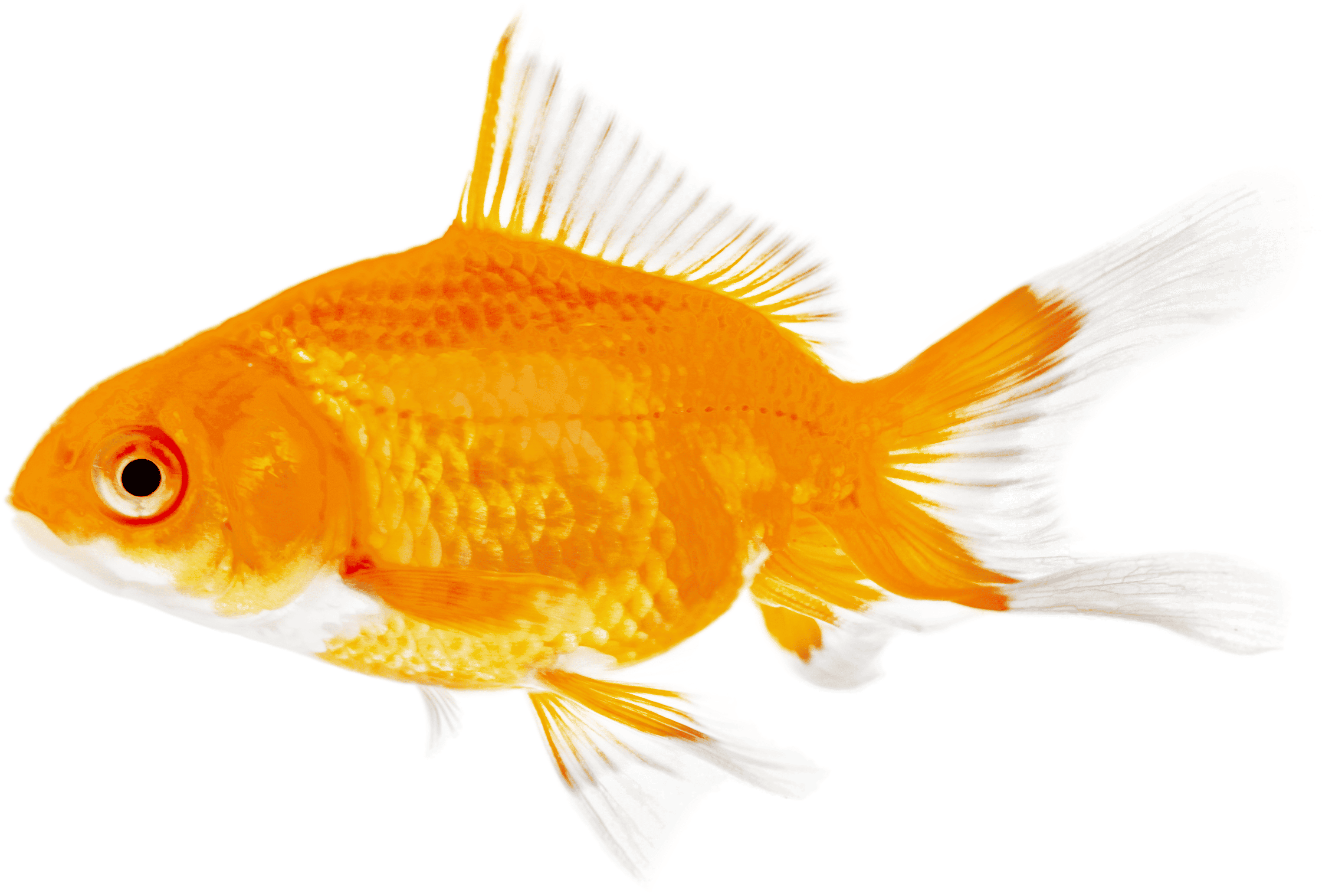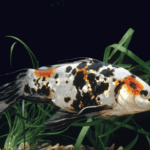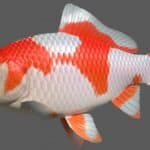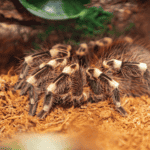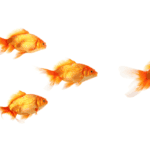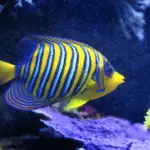Goldfish are an incredibly popular choice for both first-time and experienced aquarium hobbyists due to their unique colors, variations, and ease of care. One question that arises when considering these beautiful creatures is how long do goldfish live? The answer depends on several factors, including the environment they are kept in and the level of care they receive throughout their lives.
In general, the lifespan of a goldfish can vary significantly, with some living as long as 20 years or more when kept in ideal conditions. Outdoor ponds tend to provide a more natural habitat, allowing goldfish to experience seasonal variations and natural light, which can lead to increased longevity. Conversely, goldfish kept in tanks and bowls may have shorter lives, with factors such as water quality, diet, and tank size playing a crucial role in determining their overall health and longevity.
Understanding the factors that govern the lifespan of your goldfish is essential to providing them with the care they need to thrive. By maintaining proper water conditions, offering a nutritious diet, and ensuring the appropriate tank size, you can help create an environment where your goldfish have the opportunity to live a long, healthy life.
Goldfish Lifespan Overview
Average Lifespan
Goldfish can have varying lifespans depending on factors such as their habitat, diet, and water quality. On average:
- Shubunkin and comet goldfish: 12 to 15 years
- Oranda goldfish: 15 years (up to 20 years)
It is important to note that goldfish kept in outdoor ponds have a higher likelihood of living longer than those kept in tanks and bowls.
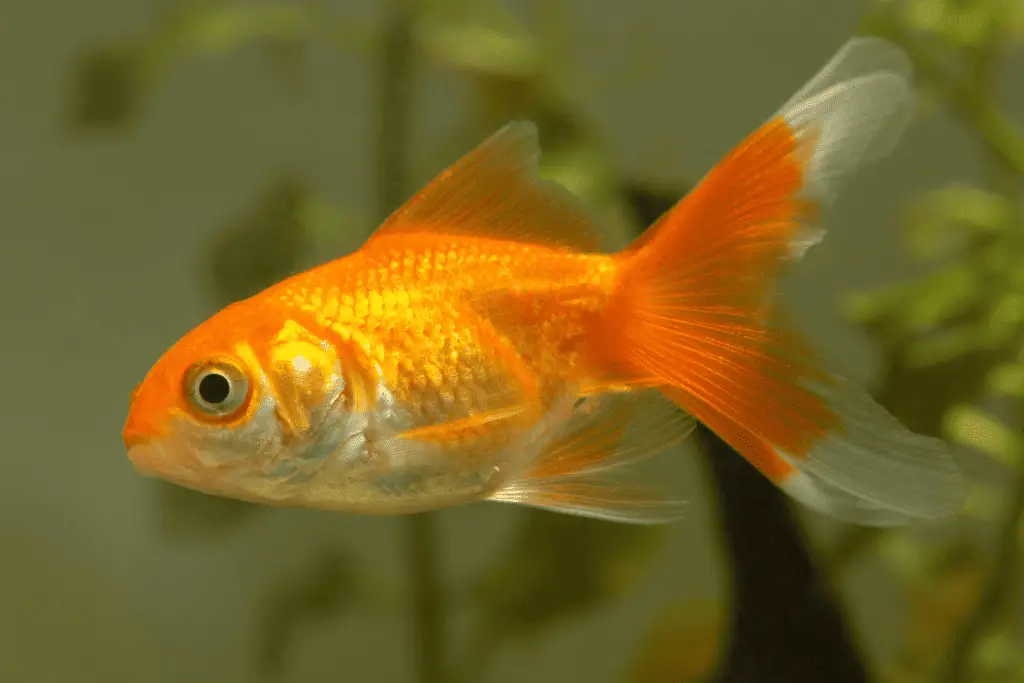
Oldest Goldfish
The oldest goldfish on record lived for 43 years. This goldfish, named Tish, was owned by Hilda and Gordon in the United Kingdom. This record demonstrates the potential longevity of goldfish when provided with the right conditions and care.
Factors Influencing Lifespan
Several factors affect a goldfish’s lifespan:
- Housing: Providing a well-maintained and spacious environment positively impacts longevity. Tanks should be a minimum of 20 gallons for one goldfish, and an additional 10 gallons for each additional goldfish.
- Diet: Feeding high-quality food in appropriate amounts plays an essential role in their overall health and lifespan.
- Water quality: Regular water changes and efficient filtration systems ensure that ammonia levels are minimal, reducing stress on the goldfish and increasing their lifespan.
- Stress: Reducing stress by offering good water quality, spacious tanks, and compatible tank mates can significantly impact a goldfish’s longevity.
- Predators: Protecting outdoor pond goldfish from predators, such as raccoons, can prevent premature death and result in longer lifespans.
Goldfish Varieties and Their Lifespans
Goldfish come in various types, each with unique appearances and lifespans. Understanding the different goldfish varieties can help ensure proper care and a longer, healthier life for each species.
Common Goldfish
- Species: Common Goldfish (Carassius auratus)
- Lifespan: 10-15 years
The common goldfish is the most recognized and hardy of all goldfish species. These goldfish can live for 10-15 years with proper care.
Comet Goldfish
- Species: Comet Goldfish (Carassius auratus)
- Lifespan: 12-15 years, up to 20 years
The comet goldfish is a slim-bodied species known for their long, flowing tails. Their average lifespan is between 12 and 15 years, but they can live up to 20 years under optimal conditions.
Fancy Goldfish
Oranda Goldfish
- Species: Oranda Goldfish (Carassius auratus)
- Lifespan: 10-15 years, up to 20 years
Oranda goldfish are a fancy goldfish variety known for their distinctive head growths. These goldfish have an average lifespan of 15 years and can live up to 20 years with the right care.
Ranchu Goldfish
- Species: Ranchu Goldfish (Carassius auratus)
- Lifespan: 10-15 years
Ranchu goldfish are another fancy variety, characterized by their broad backs and curved spines. They typically have a lifespan of 10 to 15 years.
Bubble Eye Goldfish
- Species: Bubble Eye Goldfish (Carassius auratus)
- Lifespan: 10-15 years
Bubble Eye goldfish are a unique fancy goldfish variety with fluid-filled sacs under their eyes. Their lifespan is similar to other fancy goldfish, at around 10 to 15 years.
Slim-Bodied Goldfish
Shubunkin Goldfish
- Species: Shubunkin Goldfish (Carassius auratus)
- Lifespan: 12-15 years
Shubunkin goldfish are a slim-bodied variety known for their calico patterns. They have an average lifespan of 12 to 15 years.
Fantail Goldfish
- Species: Fantail Goldfish (Carassius auratus)
- Lifespan: 10-15 years
Fantail goldfish have a more rounded body shape than other slim-bodied goldfish, and they are known for their wide, fan-shaped tails. Their lifespan is typically between 10 and 15 years.
Goldfish Care for Increased Longevity
Proper Habitat
Goldfish thrive in a well-maintained environment that mimics their natural habitat. While many people keep goldfish in small tanks or bowls, this can lead to stress and a decreased life expectancy. To properly house your goldfish, choose an appropriately sized tank that allows for adequate swimming space, depending on the species.
Common and comet goldfish require larger tanks, while fancy goldfish with flowing fins, such as telescope eyes, lionheads, and bubble eyes, can be housed in smaller aquariums. Ensure that the tank is equipped with a proper filtration system to maintain water quality, and consider adding a heater if you live in cold climate areas. Keep the water temperature stable, ideally between 65–75°F, to avoid stressing the fish.
If you have a suitable outdoor area, goldfish can also thrive in a pond environment, where there is ample space, natural light, and a variety of food sources. Be sure to provide proper water conditions and protection from predators in an outdoor pond.
Suitable Diet
Goldfish have specific dietary needs that contribute to their overall health and longevity. They are omnivorous, which means they require a mix of vegetables and protein in their diet. To ensure a balanced diet, feed your goldfish with high-quality pellets or flakes, supplemented with fresh vegetables and occasional insects for added nutrition.
Some suitable vegetables to feed goldfish include peas, spinach, and lettuce. Avoid overfeeding, as this can lead to constipation, swim bladder issues, and poor water quality.
Maintaining Water Quality
High water quality is essential for ensuring your goldfish’s health, as poor conditions can lead to ammonia poisoning, stress, and infections. Regularly monitoring water conditions, including ammonia levels, pH, and temperature, can help prevent these issues.
To maintain water quality, perform regular water changes (25–40% of the tank’s volume weekly) and use a proper filtration system to remove waste and other impurities. Adjust your filtration system as needed to avoid overcrowding, as this can lead to poor water quality and stress.
By providing a proper habitat, suitable diet, and maintaining water quality, you can significantly improve the life expectancy of your goldfish, allowing them to live a more fulfilling and healthy life.
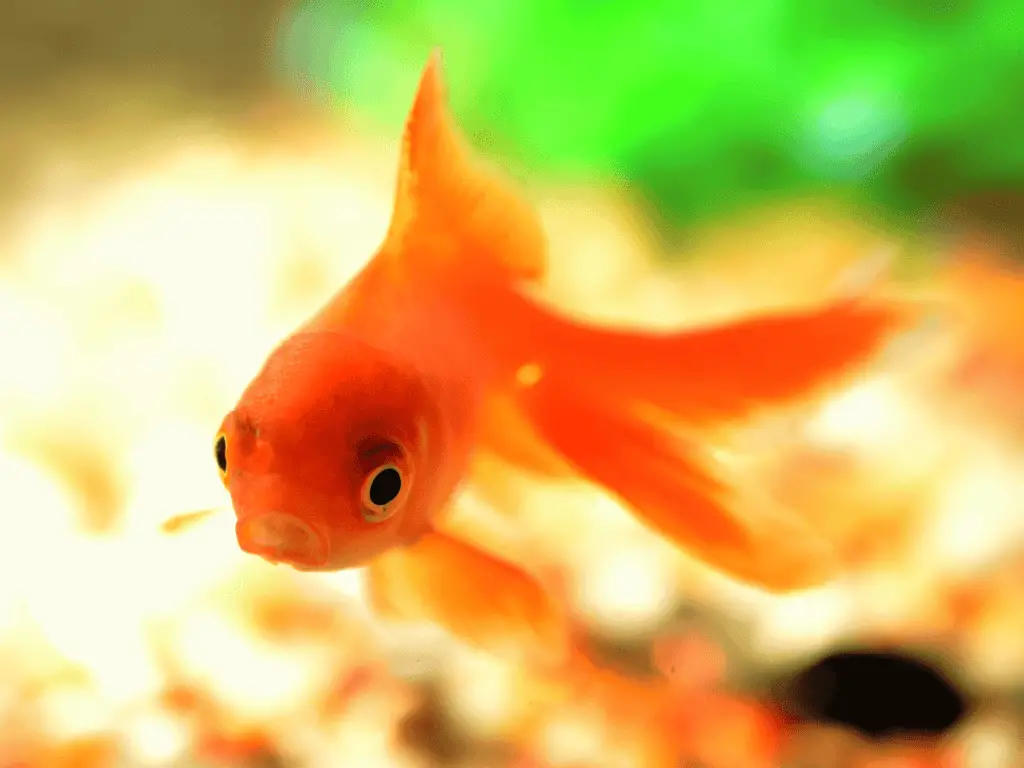
Common Health Issues and Prevention
Disease and Infections
Goldfish, like any other living creature, are susceptible to disease and infections. Common diseases include:
- Swam Bladder Disorder: This ailment can cause a goldfish to have difficulty swimming or maintaining proper buoyancy. To prevent this, feed your goldfish a high-quality sinking pellet diet, and maintain optimal water quality.
- Ammonia poisoning: Goldfish produce ammonia as waste, and if the water isn’t adequately filtered, this can lead to poisoning. Always use appropriate filtration and perform regular water changes to maintain water quality.
- Other infections: Parasites, bacteria, and fungi can impact the health of your goldfish. Preventing these infections requires strict hygiene procedures like cleaning the tank regularly and quarantining any new fish before adding to the tank.
Stress and Environmental Changes
Goldfish can be sensitive to changes in their environment. Factors that can induce stress include:
- Rapid changes in water temperature and chemistry: Goldfish need stable water conditions to thrive. Try to maintain a consistent temperature and monitor parameters like pH, ammonia, nitrite, and nitrate.
- Overcrowding: Providing sufficient space for each fish is essential. Overcrowding can lead to increased stress, which can weaken the immune system and contribute to the risk of disease.
- Overfeeding: Feeding goldfish too much can also lead to poor water quality and increased stress. Feed them 2-3 times per day, only as much as they can consume within a couple of minutes.
Genetics and Selective Breeding
Selective breeding for certain physical traits in fancy goldfish varieties can impact their lifespan and overall health. Some goldfish are more prone to health issues due to their genetics, such as:
- Breeds with altered body shapes: Some fancy goldfish have body shapes that can predispose them to health issues like swim bladder disorders or other mobility challenges.
- Shorter lifespans in specific breeds: Fancy goldfish like ranchus, telescope eyes, and orandas generally have shorter lifespans, living between 10-15 years compared to common or comet goldfish that can live 20 years or more.
Proper nutrition, providing a suitable habitat, and routinely monitoring water quality are crucial to maintaining the health of goldfish, regardless of their breed. By addressing these factors and understanding the unique needs of your specific goldfish variety, you can contribute to their long, healthy life.
Goldfish in Different Living Conditions
Domesticated Vs. Wild Carp
Goldfish are domesticated descendants of the common carp, a wild freshwater fish, found in many parts of Europe and Asia. Goldfish have been selectively bred for their unique and mesmerizing appearances, whereas wild carp have remained largely unchanged. Domesticated goldfish and wild carp have different living conditions with corresponding effects on their lifespans.
Wild carp can endure harsh conditions, surviving in muddy waters and feeding on insect larvae, plants, and small organisms. Their natural habitat also includes seasonal variations, with temperatures and availability of food changing throughout the year. Due to their adaptation to their environment, wild carp have a relatively long lifespan, sometimes exceeding 30 years.
In contrast, domesticated goldfish are more dependent on optimal living conditions and proper care from their keepers. Their lifespan typically ranges from 5 to 25 years, depending on factors such as water quality, temperature, and diet.
Indoor Aquarium Vs. Outdoor Pond
Goldfish kept in an indoor aquarium or an outdoor pond both require different approaches to care, which have a significant impact on their lifespans.
Indoor Aquarium:
- Tank size: Goldfish require ample space to swim and grow. A larger tank improves water quality and reduces stress.
- Filtration: Use appropriate filters to maintain water quality, removing harmful toxins such as ammonia and nitrites.
- Water conditions: Monitor and maintain proper pH, temperature, and hardness levels.
- Diet: Feed your goldfish a balanced diet of high-quality pellets, flakes, and fresh or frozen foods.
Outdoor Pond:
- Pond size and depth: A larger pond with a depth of at least 2-3 feet is necessary to allow goldfish sufficient space and protection from predators.
- Water quality: Regular testing and maintenance of water conditions is critical to ensure a healthy environment for the fish.
- Seasonal care: Outdoor ponds are influenced by seasonal variations, and goldfish may require extra care during extreme weather conditions, such as avoiding overfeeding during winter months.
- Predator protection: Provide hiding spots for goldfish, and install protective measures such as nets or pond covers to prevent predators from harming your fish.
In summary, the lifespan of a goldfish varies greatly depending on the living conditions and quality of care they receive. By ensuring their needs are met, goldfish keepers can potentially help their pets live long, healthy lives.
Record-Holding Goldfish and Their History
Some goldfish have truly stood out due to their extraordinary lifespans, making them record-holders in the goldfish world. These exceptional members of their species have been well-documented over the years.
One of the oldest goldfish ever recorded was named Goldie, a common goldfish who lived in a fish tank and had an impressive lifespan of 45 years. This notable age is a rarity among goldfish, as their average lifespan usually ranges between 10 to 20 years when given proper care. Goldie’s long life can be attributed to good care and a bit of luck.
The current world record for the oldest goldfish is held by Tish, who lived for 43 years. Tish was recognized by the Guinness Book of World Records for his lengthy lifespan and was a
